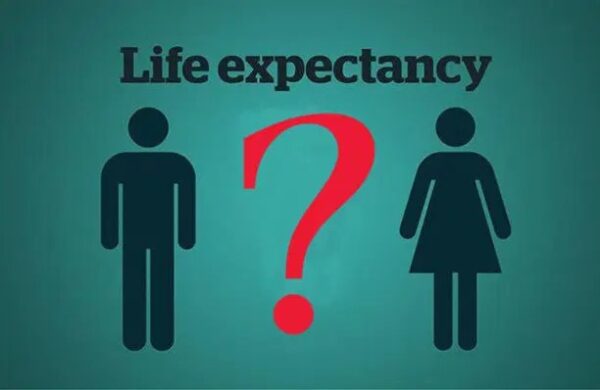
Life expectancy is a critical indicator of a population’s overall health and quality of life. It reflects the average number of years a person is expected to live, based on prevailing mortality rates at the time of birth. In many African nations, life expectancy remains alarmingly low, shaped by a combination of factors including high infant and maternal mortality rates, widespread infectious diseases, limited access to quality healthcare, chronic malnutrition, socio-economic instability, and unsafe living conditions.
According to the World Health Organization (WHO) and other global health agencies, the following African countries currently have the shortest life expectancies on the continent:
1. Chad – Average Life Expectancy: 52.5 years
Chad holds the unfortunate distinction of having the lowest life expectancy in Africa. This grim statistic underscores the ongoing health crisis in the country, where a multitude of public health challenges persist.
Leading causes of death in Chad include communicable diseases such as malaria and tuberculosis, as well as maternal and neonatal complications. Malnutrition and limited access to clean water and sanitation also significantly contribute to the high mortality rates. Many citizens face severe challenges accessing even the most basic healthcare services, particularly in rural areas where infrastructure is lacking.
Despite these challenges, Chad has made modest progress over the years. According to WHO data, the country’s life expectancy at birth has improved—from 51.2 years in 2000 to 59.1 years in 2021. However, this progress is still overshadowed by the immense health burdens that continue to weigh heavily on the population.
2. Nigeria – Average Life Expectancy: 53.63 years
Nigeria, Africa’s most populous nation, ranks second among countries with the shortest life expectancy. This is especially concerning considering the country’s wealth of natural resources and regional influence.
Health experts cite a combination of communicable and non-communicable diseases as the leading causes of death. Malaria remains the top killer in Nigeria, followed closely by ischemic heart disease and stroke. The healthcare system, while advanced in some urban centers, remains largely underfunded and inaccessible to many, especially in rural communities.
Other significant contributors include poor maternal and child health outcomes, inadequate sanitation, and inconsistent access to clean water. Socio-economic disparities further exacerbate health inequalities, making it difficult for millions to receive timely and effective medical attention.
3. Central African Republic – Average Life Expectancy: 53.9 years
The Central African Republic (CAR) is another country grappling with a low life expectancy, hovering just under 54 years. This reflects the devastating impact of long-term poverty, persistent armed conflict, and chronic political instability.
The healthcare infrastructure in CAR has been severely weakened by decades of unrest, making it difficult to respond to even routine medical needs. The most common causes of death include tuberculosis, malaria, and violence-related injuries. Medical personnel are scarce, and the majority of the population lacks access to basic health services, vaccines, and nutritional support.
The compounded effect of insecurity and poverty has pushed much of the population into vulnerable conditions, resulting in one of the highest mortality rates in the world.
4. South Sudan – Average Life Expectancy: 55.0 years
South Sudan, the world’s youngest country since gaining independence in 2011, continues to struggle with profound socio-political and economic challenges. Years of civil unrest, combined with widespread displacement, have severely undermined the country’s ability to develop a functional healthcare system.
The limited number of hospitals and trained medical professionals cannot meet the health demands of the population. Chronic malnutrition, unsafe water sources, and poor maternal care are major health concerns. Many people live in internally displaced persons (IDP) camps, where health services are either minimal or non-existent.
In addition to humanitarian crises, frequent outbreaks of preventable diseases like cholera and measles have further diminished the average lifespan. The lack of stable governance and insufficient investment in public health infrastructure continue to hinder efforts to improve life expectancy in South Sudan.
5. Somalia – Average Life Expectancy: 56.0 years
Somalia rounds out the list of African nations with the shortest life expectancy. The East African country has been plagued by decades of civil war, natural disasters, and weak governance structures, all of which have crippled public health and social services.
More than half of the population lives below the poverty line, and ongoing food insecurity continues to drive widespread malnutrition, particularly among children. Recurrent droughts have worsened famine conditions, while poor sanitation has led to outbreaks of waterborne diseases.
According to the World Health Organization, the leading cause of death in Somalia is lower respiratory infections, followed by other preventable illnesses like diarrhea and vaccine-preventable diseases. The absence of a robust healthcare system leaves the population particularly vulnerable to epidemics, maternal deaths, and chronic conditions.
Conclusion
These rankings are a sobering reminder of the urgent need for investment in healthcare, infrastructure, education, and social welfare across the continent. While some progress has been made in recent years, sustained efforts are required from both national governments and international partners to address the root causes of poor health outcomes and improve life expectancy for millions of Africans.
Ensuring access to basic healthcare, improving maternal and child health, combating infectious diseases, and strengthening health systems are critical steps in turning the tide. With committed leadership and focused development efforts, a brighter and healthier future is within reach.








